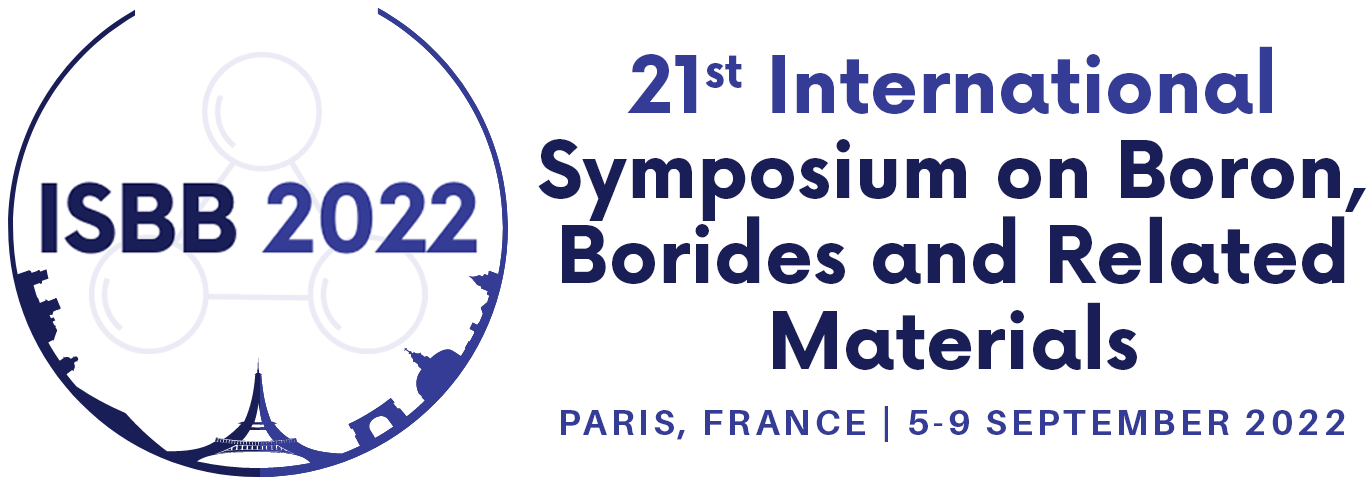
Kaoru Kimura
University of Tokyo (Japon)
Kaoru Kimura is a professor of Department of Advanced Materials Sciences and Department of Materials Engineering, the University of Tokyo. He has been searching for a semiconducting quasicrystal in boron-rich or aluminum-based materials since more than 30 years ago. During this research period, he has developed a unified picture of icosahedral cluster solids in these two kinds of materials. He is participating in the big research project of Japan, “Hypermaterials” and his group of this project found some new quasicrystals using machine learning. He is a member of International Scientific Committee of International Symposium of Boron, Borides and Related Materials (ISBB), and presidents of the Society of Boron, Borides and Related Materials of Japan and Thermoelectrics Society of Japan. He received IBM Japan Science Prize and The Japan Institute of Metals and Materials Meritorious Award.

Yann Le Godec
Institut de Minéralogie, de Physique des Matériaux et de Cosmochimie (France)
Yann Le Godec is CNRS research director at the « Institut de Minéralogie, de Physique des Matériaux et de Cosmochimie » (IMPMC) hosted by Sorbonne University. He is an experienced user of large-scale instruments (synchrotrons and neutrons sources) for high-pressure research. During last years, he has used high pressure to synthesize and patent new outstanding light-element materials with advanced mechanical and physical properties. He has been also leading in the development of original in situ high pressure-high temperature diffraction techniques, both for x-rays and neutron studies (some of them are patented). He was also responsible of the French « High Pressure Network » in France, a multidisciplinary network of approximately 250 scientists and engineers from all scientific departments of the CNRS. For his various works, he received the CNRS « bronze medal » Award.

Dr. Timothy Strobel
Carnegie Institution of Washington (USA)
Timothy Strobel is a Staff Scientist at the Carnegie Institution for Science, Earth and Planets Laboratory, in Washington, DC. Strobel received his PhD in chemical engineering from the Colorado School of Mines in 2008 and subsequently joined the Carnegie Institution for Science as a Carnegie Postdoctoral Fellow. In 2011, he was appointed Staff Scientist at Carnegie. His research group studies the physics and chemistry of materials under extreme conditions, and synthesizes novel materials for energy and other advanced applications.

Pr. Johanna Rosén
Linköping University (Sweden)
Professor Johanna Rosen is the Head of the Materials Design Division at the Department of Physics, Chemistry and Biology (IFM), at Linköping University in Sweden. She received her PhD from RWTH-Aachen University in Germany in 2004, and after being a post doc and visiting scientist at LBNL in Berkeley (USA) and at Sydney University (Australia), she returned to Sweden to establish her research platform. Her research interest is focused towards fundamental theoretical and experimental studies targeting novel 3D and 2D materials, including carbides (MAX phases and MXenes) and borides (MAB phases and MBenes), for studying, e.g., magnetism and energy storage. Professor Rosen has published more than 250 scholarly research articles, and is a recipient of the Göran Gustafsson Award in Physics, handed out by the Royal Swedish Academy of Sciences. She is also a Wallenberg Scholar, and a member of the Young Academy of Sweden (2017-2022).

Pr. Lai-Sheng Wang
Brown University (USA)
Lai-Sheng Wang is an experimental physical chemist known for his work on negative ion spectroscopy and the structures and bonding of nanoclusters, such as boron and gold nanoclusters. He received his B.S. degree in Chemistry from Wuhan University in 1982 and his Ph.D. in Physical Chemistry from the University of California at Berkeley in 1990, followed by postdoctoral work at Rice University from 1990 to 1992. He is currently Professor of Chemistry at Brown University in Providence, Rhode Island.
Prof. Wang’s research focuses on the investigation of the size-dependent properties of nanoclusters using photoelectron spectroscopy. Research in his group has led to the discovery of golden buckyballs and the smallest golden pyramid, as well as planar boron clusters and all-boron fullerenes. He and his collaborators coined the word “borophene”, based on their study of the planar B36 cluster. Prof. Wang’s group has also pioneered spectroscopic studies of free multiply-charged anions and complex solution-phase anions produced from electrospray ionization. His group has developed cryogenic ion trap techniques to create ultracold ions from electrospray for high resolution spectroscopic investigations. Prof. Wang is the author or co-author of more than 500 peer-reviewed publications in the fields of size-selected nanoclusters and physical chemistry.
Prof. Wang is a recipient of the Alfred P. Sloan Research Fellowship and the John Simon Guggenheim Fellowship. He is a fellow of the American Physical Society and the American Association for the Advancement of Science. He has received the Humboldt Senior Research Award from the Alexander von Humboldt Foundation, the Earle K. Plyler Prize for Molecular Spectroscopy & Dynamics by the American Physical Society, and the E. Bright Wilson Award in Spectroscopy from the American Chemical Society.
